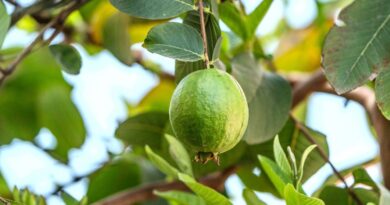Exploring Global Wine Trends to Watch
Wine, a beverage that has been cherished for centuries, is not only a drink but also a reflection of culture, tradition, and innovation. The world of wine is constantly evolving, with new trends emerging and shaping the industry in unique ways. From changes in consumer preferences to advancements in technology, there are several global wine trends that are worth keeping an eye on. In this article, we will delve into the most significant trends that are currently shaping the world of wine and are expected to have a lasting impact in the future.
The Rise of Natural and Organic Wines

One of the most notable trends in the wine industry is the growing demand for natural and organic wines. Consumers are becoming increasingly conscious of what they consume, leading to a shift towards wines that are made with minimal intervention and without the use of synthetic chemicals. Natural wines are made using organic or biodynamically grown grapes, with fermentation occurring spontaneously without the addition of commercial yeast or sulfites. These wines are often unfiltered and can exhibit unique flavors and textures that reflect the terroir in which the grapes were grown.
Organic wines, on the other hand, are made from grapes that are grown without the use of synthetic pesticides or fertilizers. These wines are certified organic by various regulatory bodies and adhere to strict guidelines throughout the winemaking process. The rise of natural and organic wines reflects a broader trend towards sustainability and environmental consciousness in the wine industry.
Technology in Winemaking

Advancements in technology have revolutionized the way wine is produced, from vineyard management to fermentation and aging. Winemakers are increasingly turning to high-tech solutions to improve efficiency, quality, and consistency in their wines. For example, drones are now being used to monitor vineyard health, allowing for more precise irrigation and pest control. Automated fermentation systems help winemakers control temperature and oxygen levels during the fermentation process, resulting in more stable and predictable outcomes.
Additionally, artificial intelligence is being used to analyze data from vineyards and wineries, helping winemakers make more informed decisions about grape selection, fermentation techniques, and blending. These technological innovations are not only improving the quality of wine but also making the winemaking process more sustainable and cost-effective.
Exploring New Wine Regions

While traditional wine-producing regions like France, Italy, and Spain continue to dominate the market, there is a growing interest in wines from emerging regions around the world. Countries like Argentina, Chile, New Zealand, and South Africa have gained recognition for their unique terroirs and high-quality wines. In addition, regions within established wine countries, such as Oregon in the United States and Tasmania in Australia, are gaining popularity for their cool-climate wines.
These new wine regions offer exciting opportunities for both winemakers and consumers to explore different grape varieties and winemaking styles. The diversity of terroirs and climates in these regions allows for the production of a wide range of wines, from crisp whites to bold reds. As interest in these regions continues to grow, we can expect to see more innovation and experimentation in the world of wine.
The Influence of Millennials on Wine Consumption

Millennials, the generation born between 1981 and 1996, have had a significant impact on the wine industry in recent years. Known for their adventurous spirit and openness to new experiences, millennials are driving trends towards premiumization, sustainability, and authenticity in wine consumption. This generation values experiences over material possessions, leading to an increase in wine tourism, pop-up wine events, and interactive wine tasting experiences.
Furthermore, millennials are more likely to experiment with different wine styles and varieties, favoring wines that are unique, artisanal, and reflective of their values. As this generation continues to gain purchasing power and influence in the market, winemakers are adapting their strategies to cater to the preferences of millennials, creating innovative packaging, engaging branding, and sustainable practices.
The Impact of Climate Change on Wine Production
Climate change is one of the most pressing challenges facing the wine industry today, with rising temperatures and erratic weather patterns affecting vineyard management and grape quality. Winemakers are increasingly facing challenges such as heatwaves, droughts, wildfires, and extreme weather events that can impact grape ripening, acidity levels, and flavor development.
To adapt to these changing conditions, winemakers are implementing strategies such as changing grape varieties, adjusting vineyard practices, and exploring new terroirs. Sustainable viticulture practices, such as dry farming, cover cropping, and biodiversity conservation, are becoming more prevalent as winemakers seek to mitigate the effects of climate change and reduce their carbon footprint.
The Growth of E-Commerce in the Wine Industry
The rise of e-commerce has transformed the way consumers purchase wine, offering convenience, choice, and accessibility like never before. Online wine retailers and subscription services have made it easier for consumers to discover and purchase wines from around the world, bypassing traditional distribution channels and brick-and-mortar stores.
Furthermore, the COVID-19 pandemic has accelerated the shift towards online wine sales, as consumers turned to e-commerce platforms to buy wine during lockdowns and restrictions. This trend is expected to continue in the post-pandemic era, with more consumers opting to buy wine online for its convenience, variety, and personalized recommendations.
Challenges and Opportunities in the Wine Industry
While the wine industry is experiencing rapid growth and innovation, it also faces several challenges that could impact its future sustainability. Issues such as changing consumer preferences, regulatory restrictions, global economic uncertainty, and competition from other beverages pose significant obstacles to the growth of the wine industry.
However, these challenges also present opportunities for winemakers to innovate, adapt, and differentiate themselves in a competitive market. By embracing trends such as sustainability, technology, and authenticity, winemakers can position themselves for success in a rapidly evolving industry.
Common Misconceptions about Global Wine Trends
One common misconception about global wine trends is that natural and organic wines are inferior in quality to conventionally produced wines. In reality, natural and organic wines can be of exceptional quality, with unique flavors and characteristics that reflect the terroir in which they were produced. These wines often appeal to consumers who value sustainability, transparency, and authenticity in their wine choices.
Another misconception is that all new wine regions produce low-quality wines compared to traditional wine regions. While it is true that some emerging wine regions may still be developing their winemaking techniques and reputation, many of these regions are producing high-quality wines that are gaining recognition on the global stage. Exploring wines from new regions can be a rewarding experience that allows consumers to discover unique styles and flavors.
Conclusion
As we have explored in this article, the world of wine is constantly evolving, with new trends shaping the industry in exciting and innovative ways. From the rise of natural and organic wines to the influence of millennials on wine consumption, there are several key trends that are worth watching in the global wine market. Winemakers, consumers, and industry professionals alike can benefit from staying informed about these trends and embracing the opportunities they present for growth, sustainability, and creativity in the world of wine.
To wrap things up, the future of the wine industry is bright, with endless possibilities for exploration, experimentation, and enjoyment. Whether you are a seasoned wine enthusiast or a curious newcomer, there has never been a better time to engage with the diverse and dynamic world of wine.




